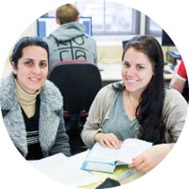Teachers and students in higher education have different perceptions as to how much feedback is being given and received (The Higher Education Academy, 2014; Douglas et al 2016).
Teachers and students in higher education have different perceptions as to how much feedback is being given and received (The Higher Education Academy, 2014; Douglas et al 2016).
The literature points to a number of student issues with feedback:
(The Higher Education Academy 2014; Getzlaf et al 2009; Evans 2013; Douglas et al 2016; O’Donovan, Rust & Price, 2016.)
Clearly, there is a misalignment between lecturer and student’s perceptions of feedback.
“As teachers, it is... our responsibility to ensure that the students can identify when feedback is given and how they can use it to improve and achieve learning outcomes within their units of study.” (Douglas et al, 2016)
Therefore, part of the academic’s role is to help students:

Be explicit at the beginning of unit about:
Instead of solely communicating a feedback plan to students, consider co-developing and co-constructing a plan with them (Getzlaf et al, 2009). Consulting to what feedback they would find most useful.

Encourage and support students to be active learners that seek feedback and work towards building self-evaluation and self-regulation skills, under guidance from their lecturers (Boud & Molloy, 2012; Carless et al, 2011; Evans 2013).
Self-regulated learning: ‘students can be described as self-regulated to the degree that they are metacognitively, motivationally, and behaviourally active participants in their own learning process’ (Zimmerman, 1989).

Discuss with students that feedback, like learning, is a conversation and not a one-way transmission from teacher to student (Boud & Molloy, 2012). You could consider initiating a conversation with your students about their specific feedback needs and adjust your feedback plan accordingly.

Remind students that feedback can come from multiple sources - not only the lecturer but also from other experts, their peers, themselves and may even be mediated by technology, such as automated feedback on an online quiz. Raise student awareness that anything they can use to improve their learning is feedback (Naylor et al, 2014).
Boud and Molloy (2012) describe in more depth a number of ways how these strategies can be embedded into your curriculum. Rethinking models of feedback for learning: the challenge of design (Boud & Molloy, 2012).
Boud, D., Molloy, E. (2012). Rethinking models of feedback for learning: the challenge of design. Assessment & Evaluation in Higher Education, 38, 2013:6. Retrieved http://www.tandfonline.com/doi/abs/10.1080/02602938.2012.691462
Carless, D., Salter, D., Yang, M., & Lam, J. (2011). Developing sustainable feedback practices. Studies in Higher Education, 36:4. Retrieved http://dx.doi.org/10.1080/03075071003642449
Douglas, T., Salter, S., Iglesias, M., Dowlman, M. & Eri, R. (2016). The feedback process: Perspectives of first and second-year undergraduate students in the disciplines of education, health science and nursing. Journal of University Teaching & Learning Practice, 13:1. Retrieved http://ro.uow.edu.au/cgi/viewcontent.cgi?article=1541&context=jutlp
Evans, C. (2013). Making sense of Assessment Feedback in Higher Education. Review of Educational Research, March 2013, 83:1. Retrieved https://doi.org/10.3102/0034654312474350
Getzlaf, B., Perry, B., Toffner, G., Lamarche, K. & Edwards, M. (2009). Effective Instructor Feedback: Perceptions of Online Graduate Students. Journal of Educators Online, 6:2:July 2009. Retrieved http://files.eric.ed.gov/fulltext/EJ904070.pdf
Naylor, R., Baik, C., Watty, K., & Asmar, C. (2014). Good Feedback Practices: Prompts and guidelines for reviewing and enhancing feedback for students. The Centre for the Study of Higher Education, University of Melbourne. Retrieved http://melbourne-cshe.unimelb.edu.au/__data/assets/pdf_file/0008/1761164/Good_Feedback_Practices_2014.pdf
O’Donovan, B., Rust, C., Price, M. (2016). A scholarly approach to solving the feedback dilemma in practice. Assessment & Evaluation in Higher Education. 41:6.
The Higher Education Academy. (2014). HEA Feedback Toolkit: March 2013. The Higher Education Academy. Retrieved https://www.heacademy.ac.uk/system/files/resources/feedback_toolkit_whole1.pdf
University of New South Wales. (2017). Assessment Toolkit: Giving Assessment feedback. Retrieved https://teaching.unsw.edu.au/printpdf/537
Zimmerman, B. J. (1989). Models of self-regulated learning and academic achievement.In B. J. Zimmerman & D. H. Schunk (Eds. ), Self-regulated learning and academic achievement: Theory, research, and practice(pp. 1 -25). New York: Springer.
Please contact the Learning and Teaching Centre for professional development, resources and advice for your learning and teaching needs at ACU.
Available 8am-10pm Sydney time, Mon to Fri,
9am-5pm Weekends and public holidays
Closed Good Friday and Christmas